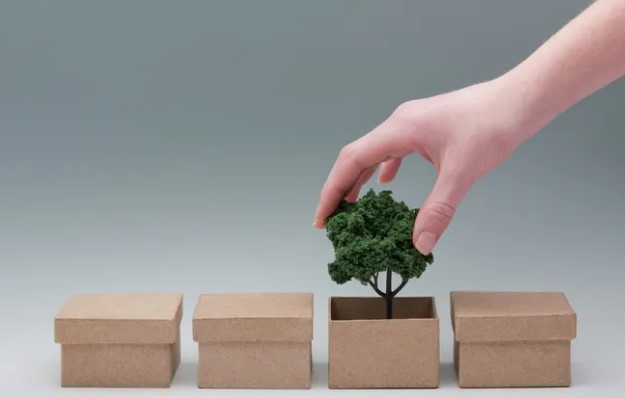Companies can increase their appeal to environmentally conscious customers and draw attention to brand commitments to sustainability with green packaging in 2023. A 2022 study indicated that 86% of consumers under age 45 are willing to pay more for sustainable packaging, up from 83% in 2021. From flexible pouches to stick pack packaging for single-serving or travel-sized products, here are three of the best green packaging strategies to pursue in 2023.
Incorporate Plant Based Ink
Soy and vegetable-based inks are trending for printing green packaging. Inks made of some percentage of soy are growing in popularity. It is worth noting that a Soy Seal logo indicates minimum soy content between 6% and 40%, and that the carriers for these inks may not consist of soy.
A recent innovation is ink made of algae. The production process for algae ink actually sequesters carbon. Algae-based ink is only available in black, which makes this ink unsuitable for full-color packaging designs.
Brands seeking a green approach to high-resolution, photo-quality designs on packaging should consider compostable polymer-based inks that do not release hazardous air pollutants. When used with digital printing technology that consumes less energy and has lower emissions than standard packaging printers, polymer-based inks are a practical choice for a wide range of custom flexible packaging materials.
Go With Lightweight Packaging
Almost any type of flexible packaging will weigh less than rigid alternatives. Flexible packaging uses less material and has a higher ratio of product to packaging. Less resources are required to produce these materials, particularly if you choose materials that contain up to 30% post consumer recycled resins.
Rigid packaging made of glass, metal or plastic causes each product to take up more space. This means that more fuel is necessary to transport fewer products in rigid packaging. Choosing rigid packaging can significantly increase a brand’s carbon footprint.
Mylar bag packaging limits the amount of space packaging takes up, and flexible materials can also reduce packaging weight by as much as 70%. Brands that choose flexible packaging are on the right track toward having a lighter carbon footprint.
Select PCR Packaging Materials
PCR packaging can reduce virgin polymer use by approximately 28%. It is worth noting that shortages in recent years have limited the availability of PCR resins and driven up prices for these in-demand materials. Virgin material prices no longer serve as a cap on recycled resin. Over ten years ago, food-grade rPET became more expensive than virgin PET in the European market. As of 2018, rPET has traded above virgin PET in Asia and the United States.
While using PCR materials for packaging costs more, this environmentally friendly investment can shrink a brand’s carbon footprint. A growing percentage of consumers also prefer, and are willing to pay more for, products with PCR packaging.
Choosing recycled or recyclable flexible packaging is a smart choice in 2023. Digitally printing custom designs on flexible packaging materials with plant-based or polymer inks are some of the best ways for consumable brands to go green.




